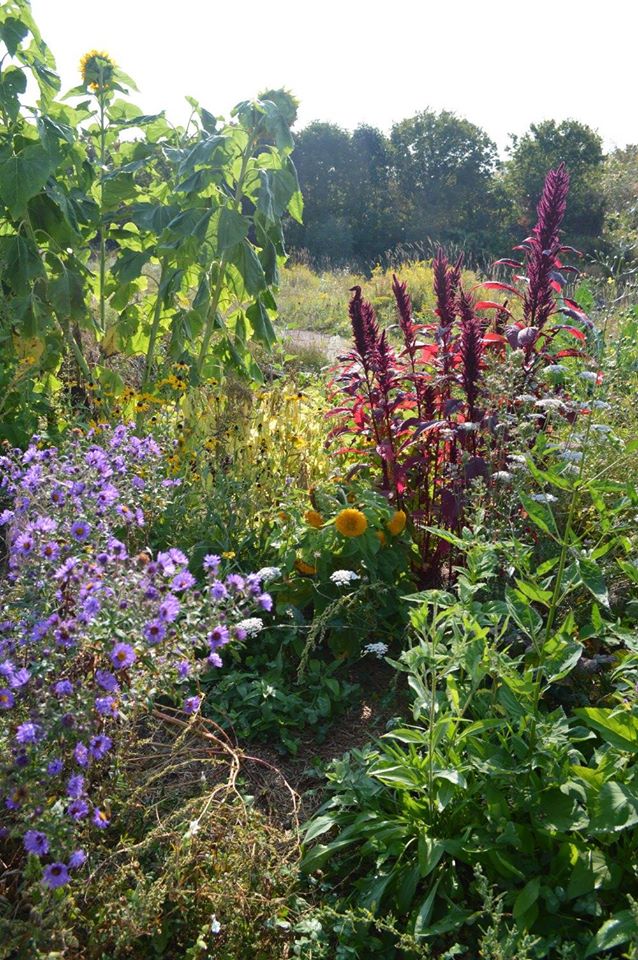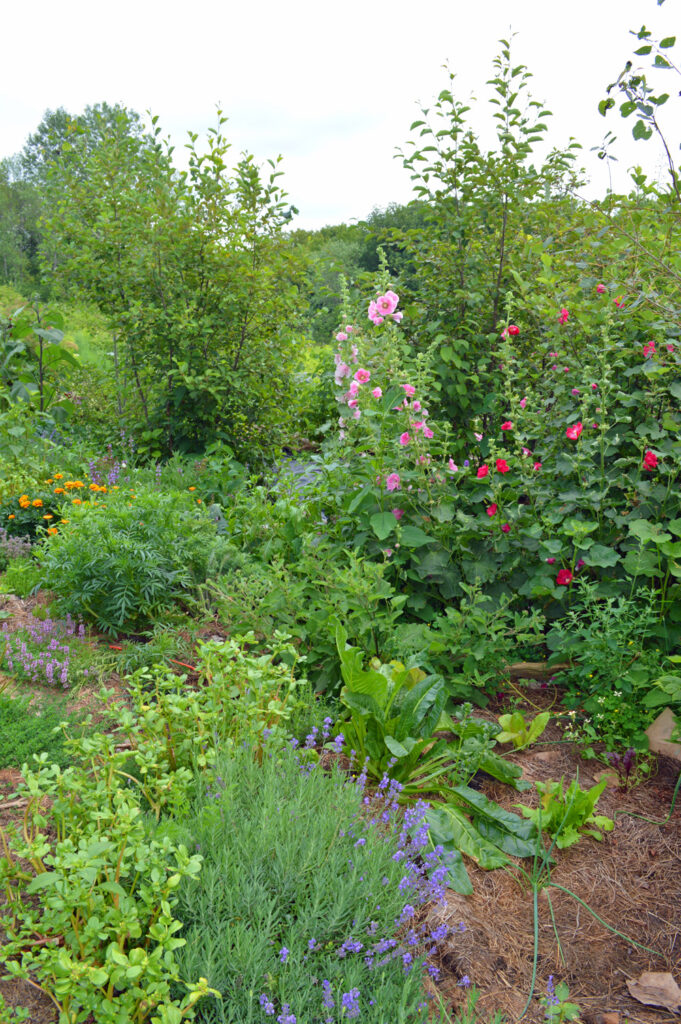Permaculture in Ottawa and Gatineau: Creating Abundant, Resilient Landscapes
 For the past twenty years, I’ve had the privilege of witnessing the transformative power of permaculture firsthand, right here in Canada, including in the Ottawa and Gatineau areas. It’s been a journey fuelled by a simple desire: to grow food in a way that works with nature, not against it. And that journey has led me to a deep appreciation for the elegant solutions that permaculture offers.
For the past twenty years, I’ve had the privilege of witnessing the transformative power of permaculture firsthand, right here in Canada, including in the Ottawa and Gatineau areas. It’s been a journey fuelled by a simple desire: to grow food in a way that works with nature, not against it. And that journey has led me to a deep appreciation for the elegant solutions that permaculture offers.
Imagine stepping into your backyard and finding yourself surrounded by a thriving, edible ecosystem. Fruit trees laden with apples and pears reach toward the sun, while below, a tapestry of berry bushes, fragrant herbs, and colourful vegetables flourishes. This isn’t a scene from a fairy tale; it’s the promise of permaculture and something I’ve seen firsthand. And it’s a reality you can create right at home.
But permaculture is much more than just a fancy term for organic gardening. It’s a design philosophy—an approach to living that draws inspiration from the inherent wisdom of natural ecosystems.
Instead of viewing our gardens and landscapes as separate from the natural world, permaculture teaches us to mimic its patterns and principles. The result? Outdoor spaces that are not only beautiful and productive but also incredibly resilient, self-sufficient, and in harmony with the local environment.
Nature’s Blueprint: Understanding Permaculture Principles
In permaculture, we don’t just design landscapes; we design relationships, guided by a set of core ethics and principles that inform our every decision and action.
These principles act as our compass, helping us navigate the complexities of creating truly sustainable and abundant ecosystems:
- Observe and Interact: Before planting a single seed or digging a garden bed, permaculture reminds us to slow down and observe. Which way does the wind typically blow? What plants are already thriving in your yard? How does water flow through your property? By paying close attention to the natural world around us, we gain invaluable insights that inform our design choices.
- Catch and Store Energy: Nature is a master of energy conservation. Rather than letting precious resources like sunlight and rainwater go to waste, permaculture encourages us to capture and utilize them effectively. Consider rainwater harvesting systems, solar-powered greenhouses, and strategically planted windbreaks to protect delicate plants.
- Obtain a Yield: A permaculture landscape is designed to be generous, providing an abundance of yields that go beyond just food. Picture fruit trees, berry bushes, and vegetable gardens, but also consider herbs for medicine, flowers for pollinators and beauty, and nitrogen-fixing plants that boost soil fertility.
- Apply Self-Regulation and Accept Feedback: Like any healthy ecosystem, a permaculture garden thrives on balance. By paying attention to feedback loops—such as pest outbreaks or nutrient deficiencies—we can make adjustments to maintain harmony and resilience.
- Use and Value Renewable Resources and Services: Permaculture encourages us to prioritize renewable resources whenever possible. Opt for compost and mulch over chemical fertilizers, and explore alternative energy sources like solar power for garden tools or greenhouses.
- Produce No Waste: In nature, there’s no such thing as waste; everything is a resource. Embrace this principle by composting kitchen scraps and yard waste, using natural mulches to suppress weeds and retain moisture, and experimenting with vermiculture (worm composting).
- Design From Patterns to Details: Nature is full of patterns, from the spiral growth of plants to the flow of water through a landscape. By observing and incorporating these patterns, we create gardens that are both aesthetically pleasing and functionally efficient.
- Integrate Rather Than Segregate: In a healthy ecosystem, diversity reigns supreme. Permaculture encourages us to move away from monocultures and embrace polycultures. By planting a variety of species together, we mimic the biodiversity found in nature and create more resilient, productive gardens.
- Start Small and Grow with Your Garden: Rome wasn’t built in a day, and neither is a thriving permaculture landscape. Take a patient, observant approach, starting with a manageable area—a single garden bed or a sunny corner—and allow both your knowledge and garden to expand over time.
- Use Edges and Value the Marginal: The edges of ecosystems are often the most diverse and productive areas. Permaculture designs make use of these “edge effects”—winding paths, multi-layered plantings, and features that attract beneficial insects and wildlife.
- Creatively Use and Respond to Change: Nature is in constant flux, and our gardens are no exception. Embrace change, adapt your approaches, and find creative solutions to challenges—this is all part of the permaculture journey.
Taking Root: Putting Permaculture into Practice in Ottawa and Gatineau
 You don’t need acres of land or decades of experience to start incorporating permaculture principles into your Ottawa or Gatineau garden. Even small, thoughtful changes can have a big impact:
You don’t need acres of land or decades of experience to start incorporating permaculture principles into your Ottawa or Gatineau garden. Even small, thoughtful changes can have a big impact:
- Microclimates Matter: Our regional climate can be unpredictable, but understanding the microclimates in your yard is key. A south-facing wall might provide a warm haven for heat-loving plants, while a low-lying area may remain moist longer, making it ideal for moisture-loving species.
- Sheet Mulching for Easy Soil Building: Want to improve soil fertility and suppress weeds without back-breaking labour? Try sheet mulching! Layer packing paper or newspaper (avoid the shiny kind) over unwanted vegetation, top it with compost, wood chips, or straw, and let nature do its work. Over time, these layers break down, creating rich, healthy soil.
- Plant for Year-Round Interest (and Eating!): Extend your growing season and enjoy harvests even in the colder months. Plant cold-hardy greens like kale and spinach. Consider a cold frame or a small greenhouse to create a microclimate for early spring and late fall crops. Don’t forget about fruit trees and berry bushes that provide delicious harvests throughout the year.
- Create a Wildlife Oasis: Invite biodiversity into your garden! Plant native flowering species to attract pollinators. Leave a patch of unmowed lawn for ground-nesting bees. Build a brush pile for insects and small animals. By making your garden a welcoming space for wildlife, you’ll cultivate a more balanced and resilient ecosystem.
- Food Forests for the Future: Imagine a multi-layered garden that mimics the structure of a forest, providing a bounty of food year after year. This is the magic of a food forest. Start by planting a canopy layer of fruit or nut trees, then add layers of shrubs, vines, herbaceous perennials, and groundcovers—all chosen for their edible or beneficial qualities.
Ready to Dive Deeper into Ottawa Permaculture or Gatineau Permaculture?
Feeling inspired to learn more and connect with the local permaculture community? We’ve compiled a resource guide filled with local organizations, garden centres, and online groups to help you on your journey.
Check Out Ottawa and Gatineau Permaculture Resources
Ready to Get Your Permaculture Gardens or Farm Underway?
If you’re ready to start your own permaculture journey or take your existing projects or designs to a new level, get in touch for a free consultation about how you can get started and what it would take to clarify your vision or bring your visions to life.
Get in Touch for a Free Permaculture Consultation in Ottawa, Gatineau, or Anywhere on Earth
